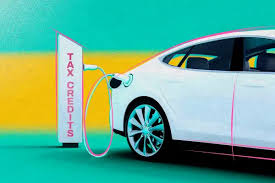In recent years, the electric vehicle (EV) market has witnessed exponential growth, with 2023 marking a record-breaking year for EV sales globally. According to BloombergNEF, electric car sales surpassed 10 million units for the first time. As we step into 2024, the landscape is set to become even more favorable for potential EV buyers, thanks to significant changes in EV tax credits. These adjustments are not just numbers on paper; they are pivotal in making electric cars more affordable and accessible to a broader audience. In this article, we’ll explore how the 2024 EV tax credits are transforming the market and what this means for you as a prospective EV owner.
Understanding the 2024 EV Tax Credit Changes
The New Incentives
The 2024 EV tax credits introduce several changes that aim to bolster electric vehicle adoption. Here are the key highlights:
- Increased Credit Amount: The maximum federal tax credit has increased from $7,500 to $10,000, making it more enticing for first-time EV buyers.
- Eligibility Expansion: Previously, tax credits were limited to vehicles from manufacturers that had sold fewer than 200,000 units. The new policy removes this cap, allowing popular brands like Tesla and General Motors to requalify.
- Income-Based Adjustments: To ensure equitable access, the credits are now tiered based on household income, with larger credits for middle and lower-income families.
- Used EVs Included: For the first time, used electric vehicles are eligible for a tax credit, offering a $4,000 incentive for pre-owned EV purchases.
Global Impact and Data
According to Reuters Mobility, these tax credits are expected to lead to a 15% increase in U.S. electric vehicle sales in 2024. This surge is not just a domestic trend; international markets are observing similar patterns, spurred by supportive policies and incentives. The International Energy Agency (IEA) projects that by 2030, electric vehicles will account for 60% of all new car sales globally.
The EV Lifestyle: Daily Benefits and Adaptation
Cost Savings and Environmental Benefits
Switching to an electric vehicle offers numerous daily benefits beyond just the initial purchase incentive:
- Lower Operating Costs: EVs are cheaper to operate than their gasoline counterparts. According to InsideEVs, the cost per mile for EVs can be as low as 3 cents, compared to 12 cents for gas-powered cars.
- Reduced Maintenance Needs: With fewer moving parts, EVs require less maintenance, translating to savings on oil changes and engine repairs.
- Environmental Impact: EVs produce zero tailpipe emissions, contributing to cleaner air and a reduction in greenhouse gas emissions. A study by CleanTechnica highlights that over a vehicle’s lifetime, an EV can reduce CO2 emissions by up to 60% compared to traditional cars.
How to Adapt to an EV Lifestyle
Adapting to an electric vehicle lifestyle involves several considerations:
- Charging Infrastructure: Understand the charging options available. Level 1 home charging can be slow but is convenient, while Level 2 chargers offer faster charging times. Public fast-charging networks are expanding, with companies like Electrify America and ChargePoint leading the way.
-
Range Considerations: Most modern EVs offer a range of 250-300 miles on a single charge, which is sufficient for daily commutes. However, planning for longer trips may require identifying charging stations along your route.
-
Incentives and Rebates: Beyond federal tax credits, many states offer additional incentives such as rebates, reduced registration fees, and access to HOV lanes. Check your local government’s website for specific details.
Practical Tips: Making the Most of EV Tax Credits
Navigating the Buying Process
- Research Eligible Models: Brands like Tesla, Rivian, and Volkswagen have models that qualify for the full tax credit. Look into the specific features and benefits of these models to find one that suits your needs.
- Timing Your Purchase: The tax credit applies in the year you take delivery of the vehicle, so plan your purchase accordingly to maximize benefits.
- Consult a Tax Professional: Ensure you understand how the tax credit will impact your tax return. A tax advisor can provide personalized advice based on your financial situation.
Where to Buy
- Dealerships vs. Direct Sales: While traditional dealerships offer a range of options, companies like Tesla and Rivian sell directly to consumers, often providing a more streamlined purchasing experience.
- Online Platforms: Websites like AutoTrader and Carvana offer both new and used EVs, sometimes with additional incentives or discounts.
Conclusion: The Road Ahead for EVs
The changes in 2024 EV tax credits are a game-changer for the electric vehicle market, making it an opportune time to consider making the switch. By lowering the cost barrier and expanding eligibility, these incentives are set to accelerate the adoption of cleaner, more efficient vehicles. As we look to the future, the trend towards electric mobility is clear, with technological advancements and policy support driving the transformation. Are you ready to join the electric revolution? Share your thoughts and experiences with us, and let’s drive towards a sustainable future together.

